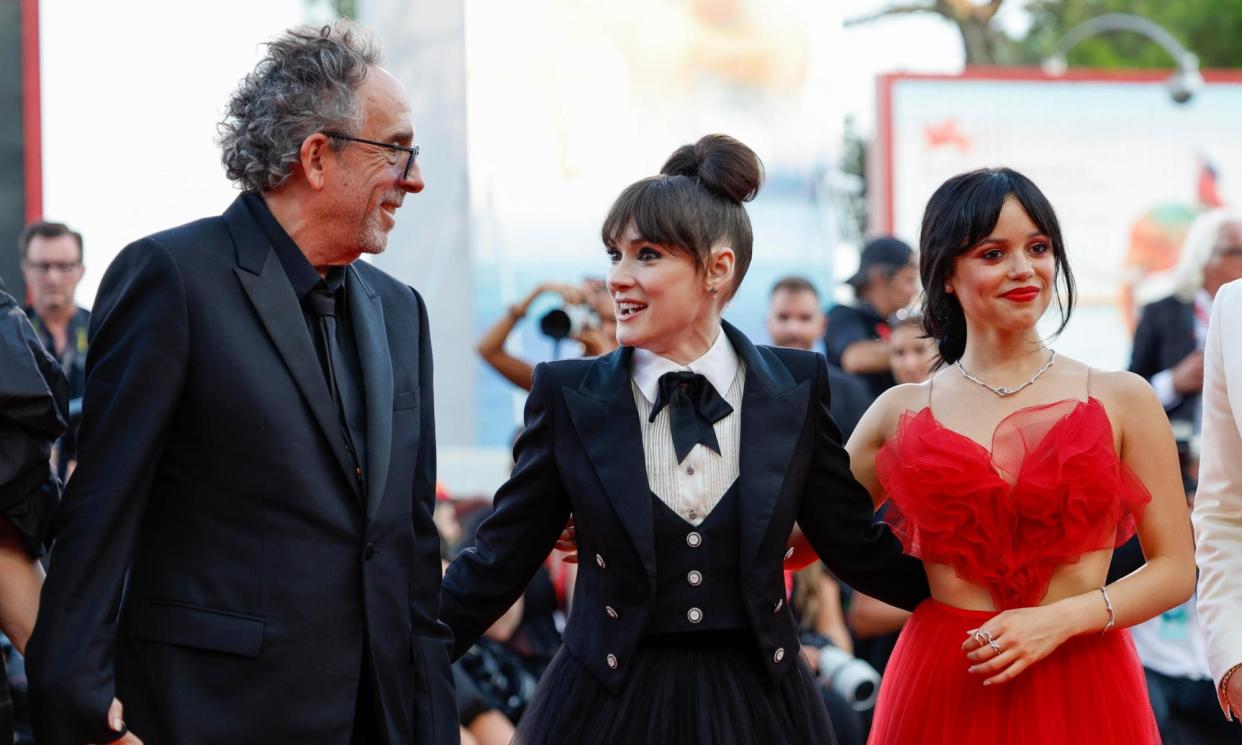The Guide #155: Is it time to break up director-actor cliques?

This week’s Guide is a guest post from the great Lucinda Everett, on the actors and directors who can’t keep away from each other. I’ll be back next week. – Gwilym
I’m all for a reunion. Oasis tour? If my “refresh page” finger hadn’t let me down, then absolutely. Reality TV cast reunions after a season of backstabbing? Oh yes – bring on the awkwardness. But there’s one version of getting the band back together I’m not so sold on: film directors repeatedly casting the same actors. Something about it feels very high school cafeteria, where cool kids Tim Burton, Johnny Depp and Helena Bonham Carter glare from their regular table at the tribeless actors shuffling to the toilet to eat lunch alone.
Burton springs to mind because Beetlejuice Beetlejuice, the sequel to his 80s cult classic, is out today. It stars the original cast, so I can’t grumble too much about repeat appearances. But it’ll be the fifth collaboration with Burton for both Michael Keaton and Winona Ryder (pictured above with Burton and Jenna Ortega). While Bonham-Carter and Depp aren’t in the film, they have done seven and eight movies with him respectively.
Burton isn’t alone; these repeat collaborations go way back. Problematic pioneer of film-making DW Griffith collaborated almost constantly with the “first lady of American Cinema” Lillian Gish through the early 1900s. And since then, directors from Ingmar Bergman and Akira Kurosawa to Martin Scorsese and Yorgos Lanthimos have gathered their own stables.
I get it – it’s fun working with your mates. Burton, “disillusioned with the movie industry”, has said that Beetlejuice Beetlejuice let him “get back to the things I love doing […] with people I love doing it with”. Even better if those mates can get you studio backing, box office success and critical acclaim. Yorgos Lanthimos seems steadfastly welded to Emma Stone (both pictured below) – she stars again in his latest, Kinds of Kindness. But then why would you waver from a formula that gave you 21 Oscar nominations and five wins across just two films (The Favourite and Poor Things).
Then there’s the draw of creating one cohesive body of work. Wes Anderson’s filmic style, and especially his aesthetic, are as consistent and distinctive as they come – and his troupe have become woven into those visuals. Take Bill Murray out of an Anderson film and you may as well make every scene asymmetrical.
But I still wonder whether moviegoers, movies and maybe even the industry itself might be better off if we mixed up the cliques, High School Musical-style. Michael Bay’s jocks could mingle with Christopher Nolan’s brainy kids.
As far as audiences go, I get the appeal of knowing what to expect. That comfort of seeing the same faces. But with moviegoers and critics tiring of sequels, franchises and IP reboots (see my last Guide), surely I’m not the only one also getting bored of watching the same cast rebooted, too? We’re craving original stories – how about some original casting?
What then might other directors create if dragged out of their casting comfort zones towards actors that don’t slide effortlessly into their directorial groove, like feet into old slippers? What about casting an actor with a distinctive style of their own – imagine Tom Cruise invading a Lanthimos film like some incongruous charisma-tron. Or Tom Hardy bringing grimy chaos to Anderson’s perfect vignettes? It could be a disaster. But it could be inventive, exciting film-making. Either way it would be new.
And call me Pollyanna but breaking up director-actor cliques might even change the industry. There’s no getting around the fact that most big Hollywood directors are straight, white, able-bodied men. And they’re largely repeat-casting people like them. Other directors reuse actors too (if seemingly to a lesser extent). But it’s these dominant directors that heavily influence the faces we see. And since they often write characters with favourite actors in mind, might a different cast lead them to tell different stories, too?
Of course, director-actor cliques aren’t solely to blame for Hollywood’s lack of diversity. The simple answer would be for studios to support a more diverse range of stories and creatives in the first place. A24 is doing it, and it’s paying off; they were the most nominated studio at last year’s Oscars and became the first ever studio to win the top six awards (plus three more). Plus, they’re worth $3.5bn.
But until the other studios catch on, perhaps those directors who can single-handedly get a project greenlit could lend a hand, step out of their comfort zones and disband the cliques. And perhaps those of us bored with the same unimaginative casting should start voting with our feet.


